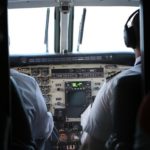Ahead of DSEI, Alan Peaford looks at the state of the defence market and what’s on the horizon. As Aerospace 4.0 technologies come to the fore, the defence sector cannot afford to be left behind.
As the global defence market comes together for its biennial visit to the revived docklands in the east end of London for DSEI next week, it is unlikely the delegates and exhibitors will face a quiet journey.
As ever, there will be protesters screaming at the people who were responsible for around 2.2% of the global GDP with a revenue of around $1,686 billion.
The top eight manufacturing nations – United States, Russia, Germany, France, China, UK and Israel – may provide valuable income to their respective national coffers but actually they provide much more than that.
Necessity is the mother of invention, and when you face the mother of all threats, then invention really in necessary.
And those protesters, using their high-definition digital cameras on their mobile phones, are probably unaware that these are a direct result of the inventiveness of the military. There are many similar examples. Our entire global air traffic control systems would not exist if it were not for the UK’s Royal Air Force in the 1930s. The Air Force developed the early warning system which led to today’s air traffic control aircraft tracking radars.
Or American, Percy Spencer, who in 1945 worked for Raytheon, developing microwave radar transmitters. He discovered a chocolate bar in his pocket was melting – a year later, microwave ovens hit the street.
There’s also GPS, sanitary towels, night vision, the jet engine and, of course, the computer – all of which can trace roots back to the military.
Adapting to change
But things are changing.
There is an exciting change of pace across the whole of the aerospace and defence industry as Aerospace 4.0 technologies come to the fore – and the defence sector cannot afford to be left behind.
The industry as a whole does face a challenge, with its shortfall of the engineers and the smart minds that are needed to develop the disruptive technologies that are today’s necessities.
Every year, around 120,000 engineers graduate from the technical universities in Europe, but only 10,000 engineers decide to work within the A&D industry, leaving almost a third of posts unfilled. In the USA more than 70,000 graduate, but again there are insufficient to meet the need.
Even when the OEMs manage to bring enough talent into their businesses, there is still the concern about the talent their sub-contractors and suppliers can source, leading to potential weak links in the production chain when the OEMs need to increase output.
Plugging the gaps
Areas like Artifical Intelligence (AI) will be a key component at DSEI next week but according to the US Secretary of Defense, James Mattis, it may be that the private technology industry may be called on to fill the gap.
Mattis sees companies like Amazon, Google, Microsoft, Apple and even Facebook having a role in the new defence plan, particularly in AI expertise.
He speaks of a need to get AI into the U.S. military faster, to make it a “more lethal and more effective” fighting force.
The US government has established the Defense Innovation Unit Experimental (DIUX) in California designed to speed the adoption of new technologies into the military.
Already, some software has been deployed in the Middle East for use in on-the-fly targeting of weapons systems, according to a report in the Washington Post.
At the UK’s BAE Systems, commercial developments are being adopted for military use.
“These companies have research budgets equivalent to nations,” said Mark Bowman, BAE’s head of flight operations. “If Microsoft can plough billions of dollars into their mixed reality glasses, HoloLens, we’d be foolish not to see if there are ways that we can use it.”
BAE has opened a Training and Simulation Integration Facility at its Warton base in northern England incorporating some of the latest gaming technologies plus advanced military aircraft simulators,
Developed in collaboration with Williams Advanced Engineering, the centre contains simulation capabilities for a variety of different aircraft types. An Augmented Reality Environment will be used to create an immersive 3D world for engineers and pilots to improve their maintenance and training skills.
A vision of the future
Bowman’s vision of the future is that humans will be managers rather than being replaced. He envisions a human controlling a swarm of 20 drones while on board a plane being flown by AI.
DSEI will be addressing the challenge of the shortfall of technologists with a People and Skills Day, introduced for the first time, to explore how government and industry can work together to address the problem.
The UK’s Defence Growth Partnership (DGP) will use this as an opportunity to launch a new initiative to develop key skills in the defence industry.
The defence industry may have only grown by 0.4% last year, but while threats remain, there is the need for this industry to stay strong – and who knows, the next great kitchen appliance may be just around the corner.

